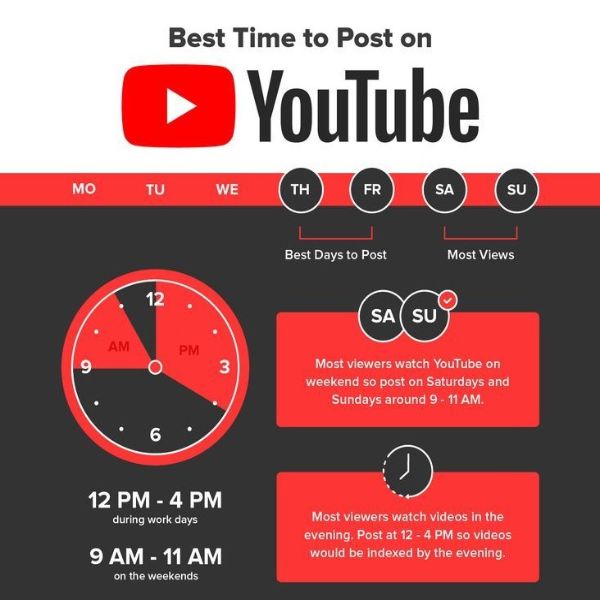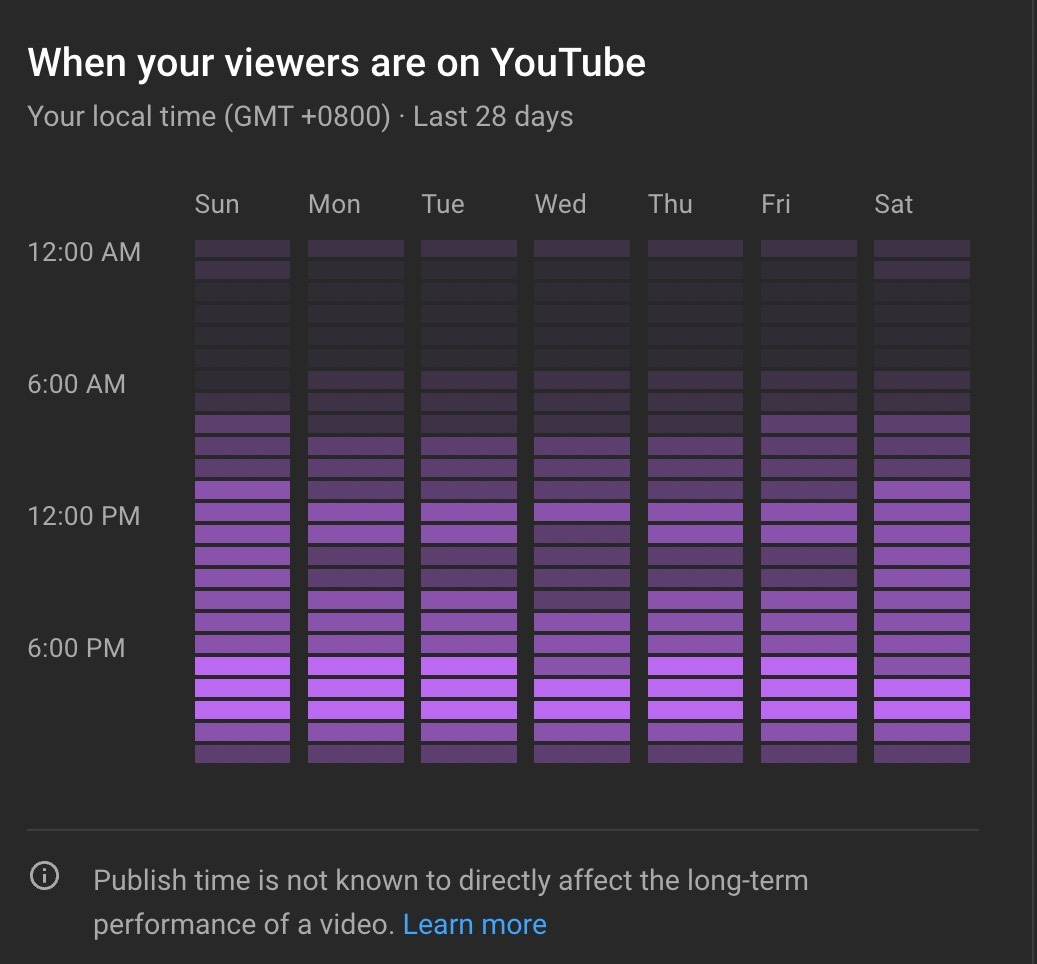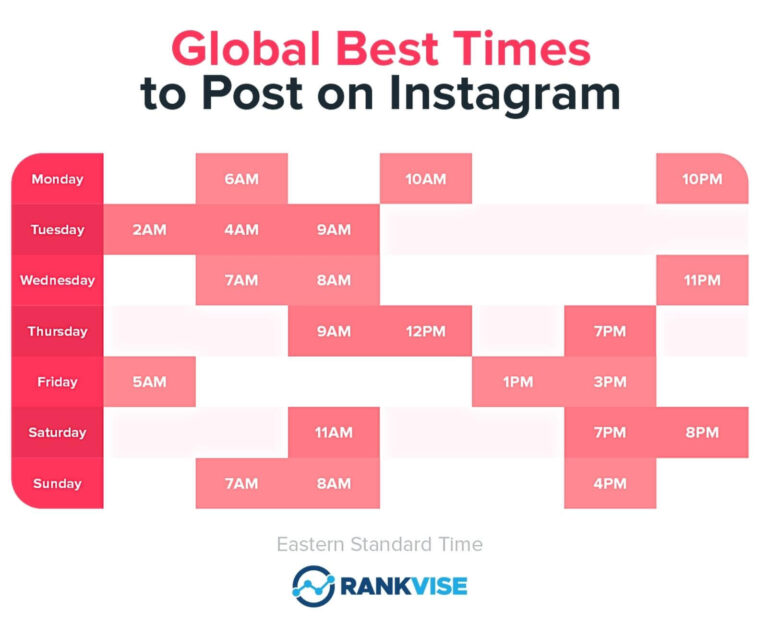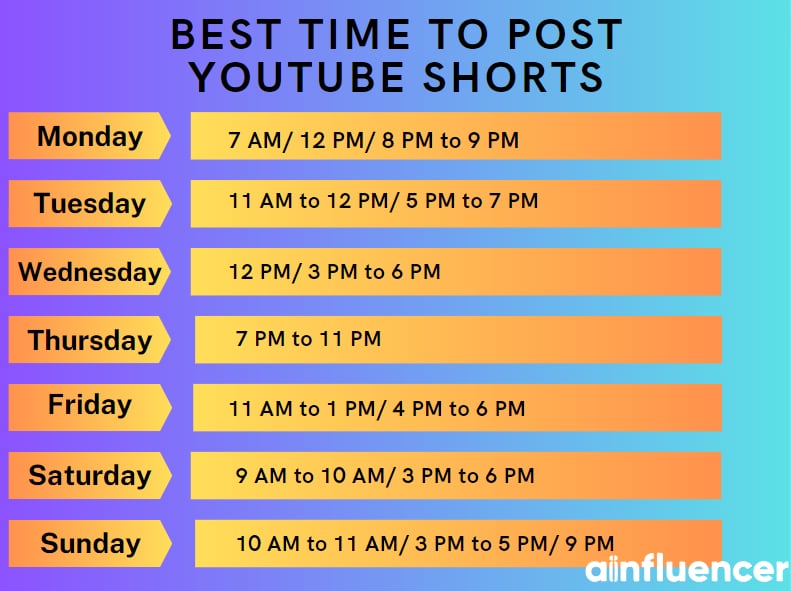Unlocking the Secrets of YouTube’s Algorithm
YouTube’s algorithm is a complex system that determines the visibility of videos on the platform. It takes into account a multitude of factors, including video content, engagement, audience retention, and timing. Understanding how the algorithm works is crucial for creators who want to maximize their YouTube reach and increase their video views and engagement. One of the key factors that affects video visibility is timing. Posting at the right time can significantly impact a video’s performance, making it more likely to appear in search results, recommendations, and user feeds.
YouTube’s algorithm is constantly evolving, and the platform is always looking for ways to improve the user experience. In 2023, the algorithm is expected to place even more emphasis on timing, making it essential for creators to post their content at the best time to reach their target audience. But what is the best time to post on YouTube in 2023? The answer to this question is not straightforward, as it depends on various factors, including the target audience, their location, and their viewing habits.
However, by analyzing YouTube’s algorithm and understanding how it works, creators can gain valuable insights into the best times to post their content. For example, YouTube’s algorithm favors videos that perform well in the first few hours after posting, so posting at times when the audience is most active can increase a video’s chances of success. Additionally, posting consistently and at the same time each week can help to build a loyal following and increase engagement.
While timing is just one of the many factors that affect video visibility, it is a crucial element in any YouTube marketing strategy. By understanding how YouTube’s algorithm works and posting at the right time, creators can increase their video views, engagement, and reach, ultimately achieving their goals on the platform.
Understanding Your Audience: Identifying Their Peak Hours
To determine the best time to post on YouTube in 2023, it’s essential to understand your target audience’s behavior and identify their peak hours of activity on the platform. This involves analyzing demographics, location, and interests to create a comprehensive picture of your audience’s viewing habits.
Demographics play a significant role in determining optimal posting times. For example, if your target audience is primarily composed of students, you may want to post during peak hours when they are most likely to be studying or taking breaks. Similarly, if your audience is primarily composed of working professionals, you may want to post during lunch breaks or immediately after work.
Location is another crucial factor to consider when identifying peak hours. If your audience is primarily located in a specific region or time zone, you’ll want to post at times that coincide with their peak hours. For example, if your audience is primarily located on the East Coast of the United States, you may want to post during morning or evening commute times.
Interests also play a significant role in determining optimal posting times. If your audience is interested in a specific topic or niche, you may want to post at times when they are most likely to be engaging with that topic. For example, if your audience is interested in fitness, you may want to post during peak workout hours or immediately after a popular fitness event.
By analyzing these factors and identifying your audience’s peak hours, you can create a posting schedule that maximizes your video’s visibility and engagement. This, in turn, can help you achieve your goals on YouTube and increase your reach in 2023.
Some popular tools for analyzing audience behavior and identifying peak hours include YouTube Analytics, Google Trends, and social media listening tools. These tools can provide valuable insights into your audience’s viewing habits and help you create a data-driven posting schedule.
The Best Times to Post on YouTube: A Data-Driven Approach
When it comes to determining the best time to post on YouTube in 2023, a data-driven approach is essential. By analyzing studies and YouTube’s own recommendations, creators can gain valuable insights into the optimal posting schedule for their content.
According to a study by TubeFilter, the best times to post on YouTube are between 12pm and 4pm EST, Monday through Thursday. This is because these times coincide with peak hours of activity on the platform, when viewers are most likely to be watching videos.
Another study by Hootsuite found that posting at 3pm EST on Thursdays can increase engagement by up to 25%. This is likely due to the fact that Thursdays are a popular day for viewers to catch up on their favorite shows and videos before the weekend.
YouTube’s own recommendations also suggest posting at times when your audience is most active. According to YouTube, the best times to post are when your audience is most engaged, which can be determined by analyzing your YouTube Analytics data.
Consistency is also key when it comes to posting on YouTube. Posting at the same time every week can help to build a loyal following and increase engagement. Experimentation is also important, as it allows creators to test different posting schedules and find what works best for their content.
By taking a data-driven approach and analyzing the best times to post on YouTube, creators can increase their video views, engagement, and reach in 2023. Whether you’re a seasoned creator or just starting out, understanding the optimal posting schedule for your content is essential for success on the platform.
Some popular tools for analyzing the best times to post on YouTube include TubeFilter, Hootsuite, and YouTube Analytics. These tools can provide valuable insights into your audience’s viewing habits and help you create a data-driven posting schedule.
How to Use YouTube Analytics to Inform Your Posting Schedule
YouTube Analytics is a powerful tool that provides creators with valuable insights into their video performance and viewer engagement. By analyzing YouTube Analytics data, creators can identify patterns in viewer engagement and adjust their posting schedule accordingly.
To get started with YouTube Analytics, creators need to access their YouTube Studio account and navigate to the Analytics tab. From there, they can view a range of metrics, including views, engagement, earnings, and audience retention.
One of the most important metrics to track is audience retention, which shows how well a video holds viewers’ attention throughout the video. By analyzing audience retention, creators can identify which parts of their videos are most engaging and adjust their content strategy accordingly.
Another important metric to track is engagement, which includes likes, comments, and shares. By analyzing engagement, creators can identify which types of content are most popular with their audience and adjust their posting schedule accordingly.
YouTube Analytics also provides creators with insights into their audience’s demographics, location, and interests. By analyzing this data, creators can identify their target audience and adjust their posting schedule to reach them more effectively.
For example, if a creator’s analytics data shows that their audience is most active on weekdays between 12pm and 4pm, they may want to adjust their posting schedule to post during these times. Similarly, if their analytics data shows that their audience is most engaged with videos that are 10-15 minutes long, they may want to adjust their content strategy to create more videos of this length.
By using YouTube Analytics to inform their posting schedule, creators can increase their video views, engagement, and reach in 2023. Whether you’re a seasoned creator or just starting out, understanding your audience’s behavior and adjusting your strategy accordingly is essential for success on YouTube.
The Role of Competition in Determining Optimal Posting Times
Competition on YouTube is fierce, with millions of creators vying for attention and views. When it comes to determining the best time to post on YouTube in 2023, competition plays a significant role. By analyzing your competitors’ posting schedules and adjusting your strategy accordingly, you can increase your video views and engagement.
One way to analyze your competitors’ posting schedules is to use tools like TubeBuddy or VidIQ. These tools provide insights into your competitors’ posting habits, including the times of day they post, the frequency of their posts, and the types of content they create.
Another way to analyze your competitors’ posting schedules is to manually track their activity on YouTube. This can be done by creating a spreadsheet or document to track the times of day your competitors post, the types of content they create, and the engagement they receive.
By analyzing your competitors’ posting schedules, you can identify gaps in the market and adjust your strategy accordingly. For example, if you notice that your competitors are posting primarily during the daytime, you may want to consider posting during the evening or nighttime to reach a different audience.
Additionally, by analyzing your competitors’ posting schedules, you can identify trends and patterns in their behavior. This can help you to anticipate their next move and adjust your strategy accordingly.
For example, if you notice that your competitors are posting a lot of content during the summer months, you may want to consider creating more content during this time to capitalize on the trend.
By staying one step ahead of your competitors and adjusting your posting schedule accordingly, you can increase your video views and engagement on YouTube in 2023.
Timing Your Posts for Maximum Engagement: The Power of Thumbnails and Titles
When it comes to maximizing engagement on YouTube, timing is just one part of the equation. Another crucial factor is the quality of your thumbnails and titles. Eye-catching thumbnails and attention-grabbing titles can make all the difference in increasing video engagement and views.
A well-designed thumbnail can increase click-through rates by up to 20%, while a poorly designed thumbnail can decrease click-through rates by up to 50%. This is because thumbnails are often the first thing viewers see when browsing through YouTube, and a high-quality thumbnail can grab their attention and entice them to click.
Similarly, a well-crafted title can increase video engagement by up to 30%. This is because titles are often the first thing viewers read when browsing through YouTube, and a attention-grabbing title can entice them to click and watch the video.
So, how can you optimize your thumbnails and titles for maximum impact? Here are a few tips:
For thumbnails, use high-quality images that are visually appealing and relevant to the content of your video. Avoid using low-quality images or images that are not relevant to the content of your video.
For titles, use attention-grabbing language that accurately reflects the content of your video. Avoid using misleading or clickbait titles, as these can decrease trust and engagement.
By optimizing your thumbnails and titles, you can increase video engagement and views, and maximize your reach on YouTube in 2023.
Additionally, consider using keywords in your titles and descriptions to improve your video’s visibility in search results. This can help you reach a wider audience and increase your video’s views and engagement.
Avoiding Common Mistakes: Posting at the Wrong Time
When it comes to posting on YouTube, timing is everything. Posting at the wrong time can lead to low engagement, low views, and a decrease in your overall YouTube reach. In this section, we’ll highlight common mistakes creators make when posting on YouTube, including posting at the wrong time.
One of the most common mistakes creators make is posting at times when their audience is not active. This can be due to a variety of factors, including the time of day, day of the week, and even the season. For example, if your audience is primarily composed of students, posting during school hours may not be the best time.
Another common mistake creators make is posting too frequently or too infrequently. Posting too frequently can lead to audience fatigue, while posting too infrequently can lead to a decrease in engagement and views.
Additionally, creators often make the mistake of posting at the same time every day or week, without considering the impact of competition on their video’s visibility. This can lead to a decrease in views and engagement, as their video gets lost in the noise.
To avoid these mistakes, it’s essential to analyze your audience’s behavior and adjust your posting schedule accordingly. Use YouTube Analytics to track your video performance and identify patterns in viewer engagement. Experiment with different posting schedules to find what works best for your content and audience.
By avoiding these common mistakes and adjusting your posting schedule accordingly, you can increase your video views, engagement, and reach on YouTube in 2023.
Remember, the best time to post on YouTube is when your audience is most active and engaged. By posting at the right time, you can maximize your YouTube reach and achieve your goals on the platform.
Staying Ahead of the Game: Adapting to Changes in YouTube’s Algorithm
YouTube’s algorithm is constantly evolving, and it’s essential to stay up-to-date with the latest changes to maximize your YouTube reach. In this section, we’ll discuss the importance of adapting to changes in YouTube’s algorithm and provide tips on how to stay informed.
YouTube’s algorithm changes can have a significant impact on your video’s visibility and engagement. For example, changes to the algorithm can affect how videos are ranked in search results, how they are recommended to users, and how they are displayed on the homepage.
To stay ahead of the game, it’s essential to monitor YouTube’s official blog and social media channels for updates on algorithm changes. You can also use tools like Google Alerts to stay informed about the latest changes.
Additionally, it’s essential to experiment with different strategies and adjust your posting schedule accordingly. This can help you to identify what works best for your content and audience, and make adjustments to maximize your YouTube reach.
By staying up-to-date with changes in YouTube’s algorithm and adapting your posting strategy accordingly, you can maximize your YouTube reach and achieve your goals on the platform.
Remember, the best time to post on YouTube is when your audience is most active and engaged. By posting at the right time and adapting to changes in the algorithm, you can increase your video views, engagement, and reach on YouTube in 2023.







